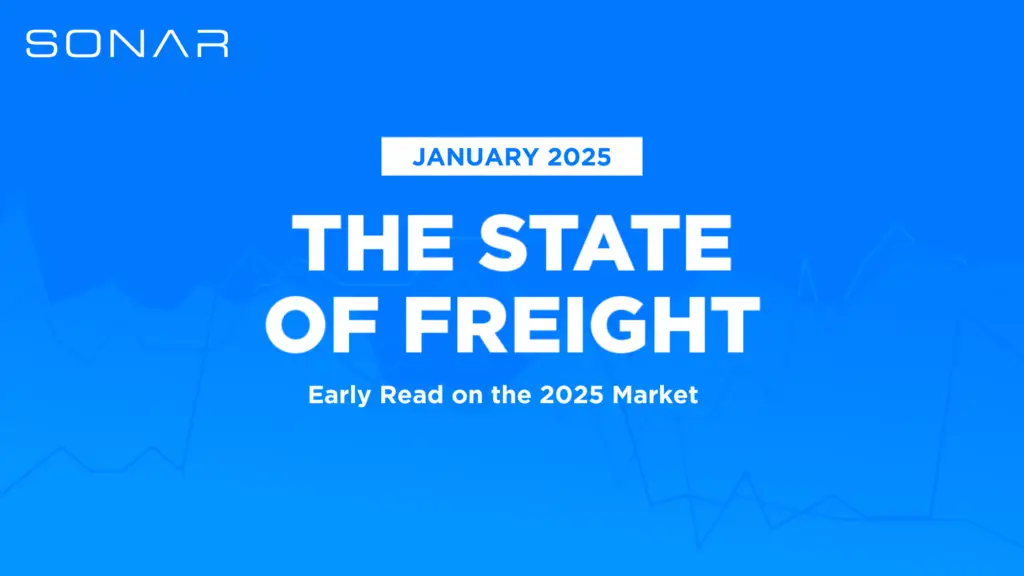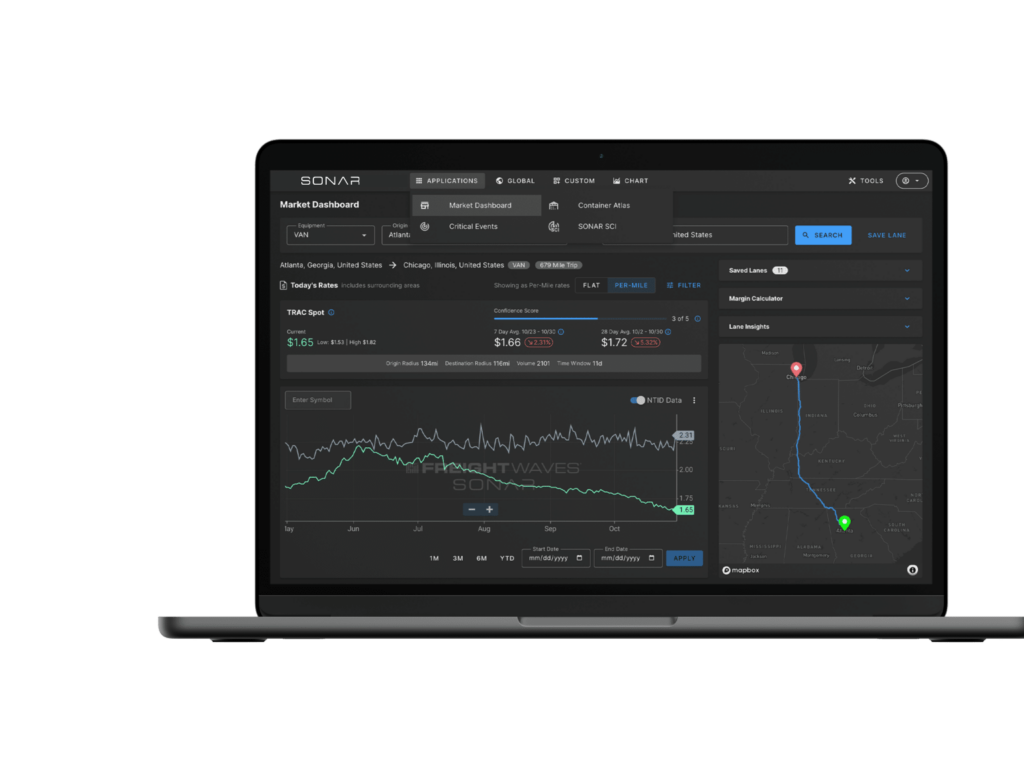Maintaining control over freight rates has never been easy for shippers. There is an ongoing shift in each of the 135 major U.S. markets – either shippers or carriers have “control” of the market – for a time, until they don’t. Even during times when the industry is described as “a shipper’s market,” figuring out what to expect has proven difficult at best. Then, COVID-19 changed the game for all supply chains. The disruption forced many industries around the globe into a sonic-class boom of growth. Many sectors of the economy are experiencing the same sudden demand for online everything. How does that impact shippers? It’s simple. The supply chain is everywhere and affects every industry on the planet. So, companies see higher demand for online ordering, and the supply chain must respond. In addition to spikes in ecommerce volumes, the overall U.S. freight market has grown in volume since the July 4th holiday, which is counter to historic trends. The
FreightWaves’ SONAR data shows the Outbound Tender Volume Index (OTVI) remains up 25% year-over-year, hardly falling from its pre-July Fourth peak. There is little evidence that freight volumes will fall off significantly in the coming weeks. How should a shipper read this data as a user or prospective user of SONAR? When the OTVI shows a higher reading year-over-year, it’s an indication of less capacity in the full truckload market, which indicates higher freight rates. What if shippers could look beyond what’s expected and apply forecasting tools to keep freight spend under control and navigate uncertainty throughout this disruption – and beyond? That’s the value, and in fact, shippers that can predict rates by using SONAR can reduce costs, find freight capacity, and increase customer service in these three ways.
HOW MUCH DO PAPER AND PACKAGING COMPANIES SPEND ON TRANSPORTATION?

Freight rate forecasting helps shippers plan contracted capacity and costs Before the current disruption, the conversation on managing freight rates centered around how organizations will navigate uncertainty through the enactment of new tariffs. Global trade was being impacted by the threat of new tariffs, which caused many shippers to “pull-forward” shipments and to move supply chains to new countries. Those impacts, coupled with the global pandemic, mean that the importance of managing freight rates has never been greater.
Fortunately, freight rate forecasting helps shippers better plan their use of contracted versus spot freight bookings. As demand rises, spot rates will naturally grow in tandem, and as a result, it is in the best interest of shippers to work to secure more contracted freight that will alleviate concerns over capacity and paying exorbitant rates, reports Lauren Pittelli of IndustryWeek. Furthermore, the ability to lock in lower rates will become more important as the ocean freight market continues to recover from the age of canceled sailings during the pandemic.
“A declining freight market is also the optimal time to begin contract renegotiations with your current providers or to launch domestic and international freight RFQs. In your negotiations, lock in rates for the longest term you can, perhaps offering a provision for cost increases tied to inflation and/or fuel indexes in return.” Shippers may also turn to SONAR for Ocean Shipment Reports to view ocean shipment volumes for imports and exports 7 days in advance by port and by carrier and plan for future trucking and/or intermodal activity.
Predicting rates allows shippers to gauge demand versus availability among multiple carriers
Predicting freight rates has an added implication for securing available capacity – allowing shippers to account for changes within demand across multiple carriers. Obviously, comparing two or three shipments across carriers seems easy. But, comparing those rates when the shipments come in at increasing volume on an ongoing basis, and without even considering multi-model capabilities, potential combinations become staggering.
By taking the time to forecast future freight rates, shippers can better plan demand for carriers. As a result, they are more educated and able to make proactive decisions regarding which carriers to use, which modes will be most beneficial, and what types of guarantees are needed to avoid added delays when the shipping time finally arrives. Shippers are using predictive freight rates to their advantage to reach their goals of reducing transportation costs.
Increased access and application of data is likely to contribute to savings in other areas of the supply chain – reducing capacity problems along the way
More access to data in planning for freight fluctuations holds additional value beyond the balance between contracted versus spot freight.
Improvements gained through freight forecasting mean a company has taken the initiative to connect its supply chain with other organizations and possible supply chain partners to aggregate and analyze data. That improvement alone means that the company is more likely to have end-to-end visibility. Obviously, visibility penetration levels may not be 100%, but more visibility that allows for more proactive decision-making will always deliver a better return on investment. As a result, companies are better able to handle changes within freight rate fluctuations and still meet demand.
Increase capacity with a freight forecasting platform that considers the whole picture of freight management
The only path to better management of freight rates lies in predicting future market fluctuations and how those trends in rates will coincide with changes in capacity, driver availability and market demand.
Even if the trucker shortage were not a pressing issue, the COVID-19 pandemic would have contributed to a sudden run on capacity – creating opportunities for mistakes. As sectors of the economy begin to recover, now is the ideal time – both financially and strategically – to review the use of freight forecasting resources and put systems into place that unify supply chain data to better understand the market. And with SONAR, that dream can be turned into reality.
Request a demonstration of SONAR today.








